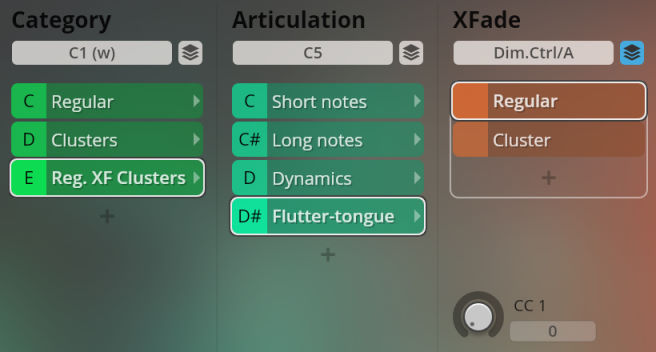Big Bang Orchestra: Solaris

Introduction
Welcome to the Vienna Symphonic Library's series of Synchron Instruments! As the name says, Big Bang Orchestra furnishes you with a selection of full-orchestra articulations, at the same time allowing you (if you haven't done so already) to explore our powerful Synchron Player software. If you're looking for that extra dramatic effect or want to highlight a passage in your composition, this bonus library could be the solution, or at least point you in the right direction.
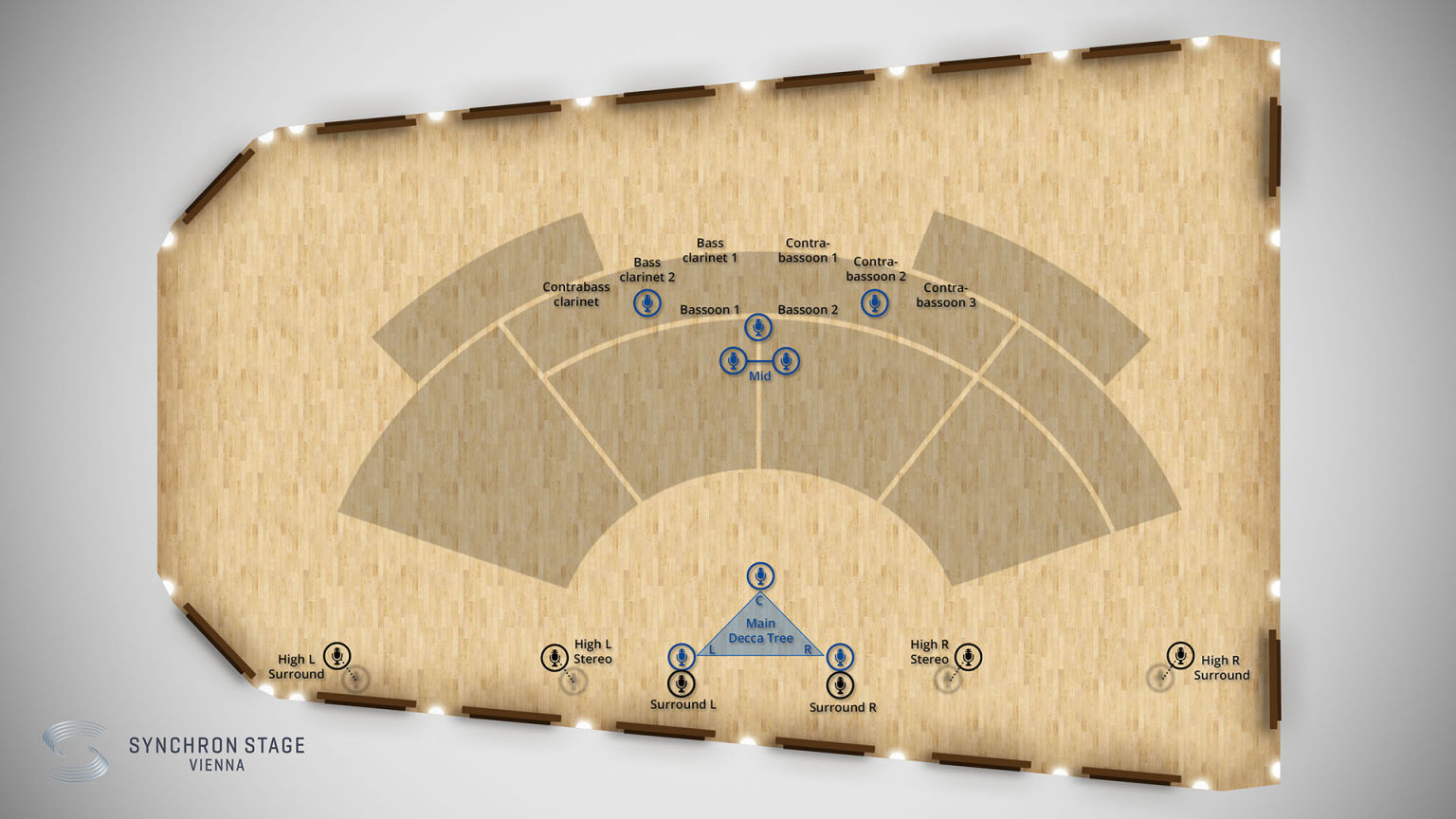
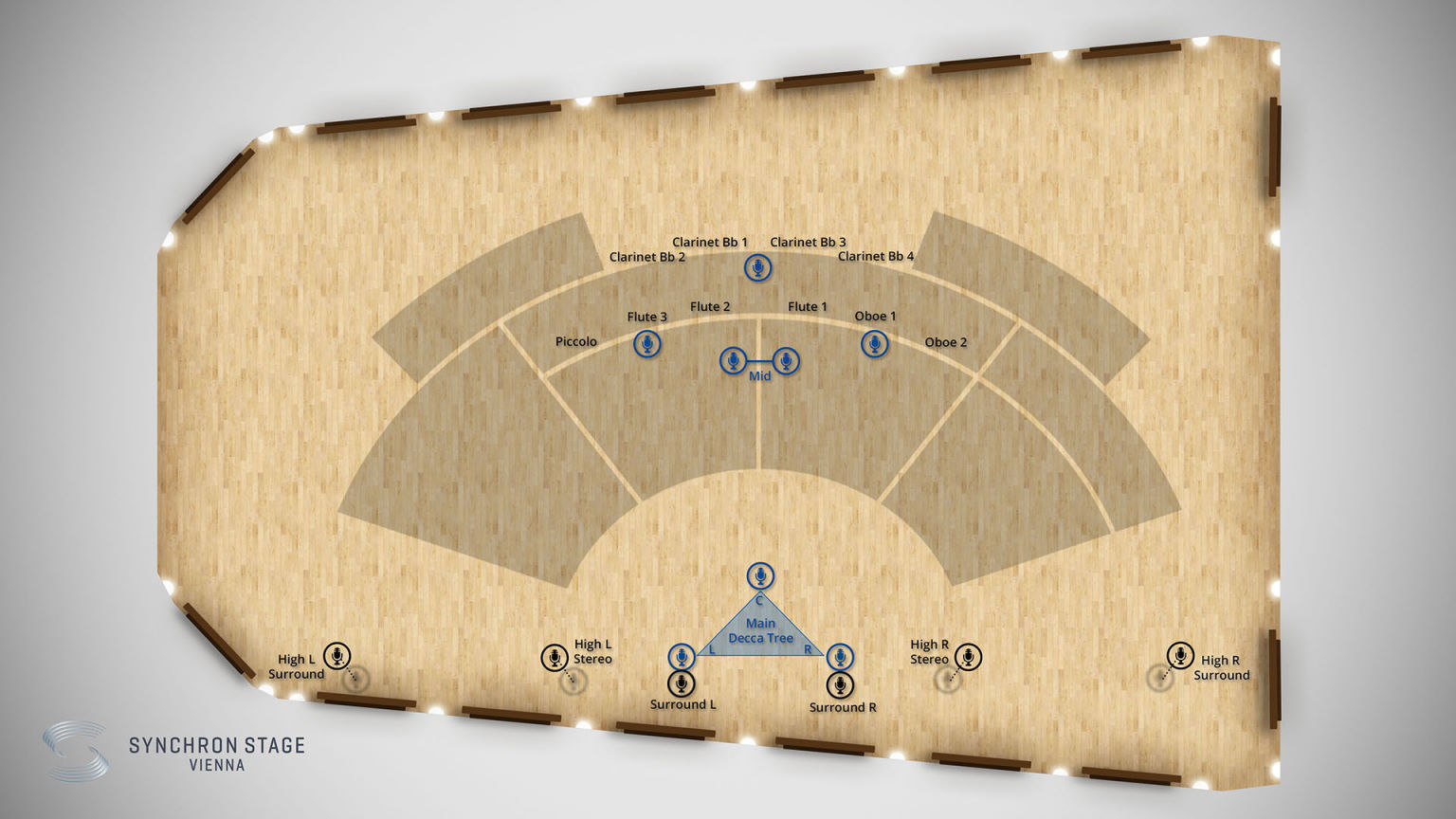
About Presets
Big Bang Orchestra makes use of our Synchron Player's unique features, and offers several Mixer Presets in five categories: Room Mix, Stereo Decca Tree, Surround to Stereo, Surround, and Processed. The Mixer Presets in each category are Close (Dry in the Room Mix), Classic, Wide, Distant, and Ambient. The Processed section offers "Big" versions of these Presets.
The BBO expansions also provide you with "Wet" Mixer Presets in each category, as well as more choice in the Processed section. These additional Mixer Presets may vary according to the respective libraries' requirements.
About Patches
Patches can be used to build your own custom Presets and shape them according to your specific requirements. Big Bang Orchestra does not contain so many Patches, so the possibilities are somewhat limited. Still, if you want to get into creating Presets of your own, please refer to the Synchron Player manual, which will be helpful in case you encounter any problems.
About Pitch
For designating pitch, the Vienna Symphonic Library uses International Pitch Notation (IPN), which was agreed upon internationally under the auspices of the Acoustical Society of America. In this system the international standard of A=440 Hz is called A4 and middle C is C4. All pitches are written as capital letters, their respective octave being indicated by a number next to it. The lowest C on the piano is C1 (the A below that is A0), etc.
The Synchron Player software allows you to set middle C to C3, C4, or C5 according to your preference.
Selecting another setting than C4 will of course also change the play ranges and keyswitches accordingly.

Walkthrough Videos
Included Presets

BBO Solaris features high woodwinds performing sustains, major octave runs in all keys as well as special scales, and arpeggios in three speeds (prepared for time-stretching), as well as low woodwinds with regular and cluster variants of short and long notes, dynamics, and flutter tongue.
FX-Woodwinds High
Long notes, octave runs in major keys and special scales, and arpeggios. The long notes have no further options.
- Range long notes: B3-A#6
- Articulation keyswitches: C1-D#1
Octave runs key
Octave runs up and down from C to B major, plain with ringing and cut release, and as performance octave. "Cut" release is only executed when the octave run is not completed, allowing you to attach another sample instead of the octave.
- Range:
- Plain run: mapped to the notes of the scale starting with its base key - upward runs around the 4th and 5th octave, downward runs around the 6th and 7th octave, e.g., C Major up C4-A5, down C6-A7
- Perform octave: mapped to the notes of the scale starting with its base key, roughly spanning the 4th to the 6th octave, e.g., C Major C4-A6
- Key selection: C2-B2
- Plain run/perform octave: C3/D3
- Ringing/cut release: F3/G3
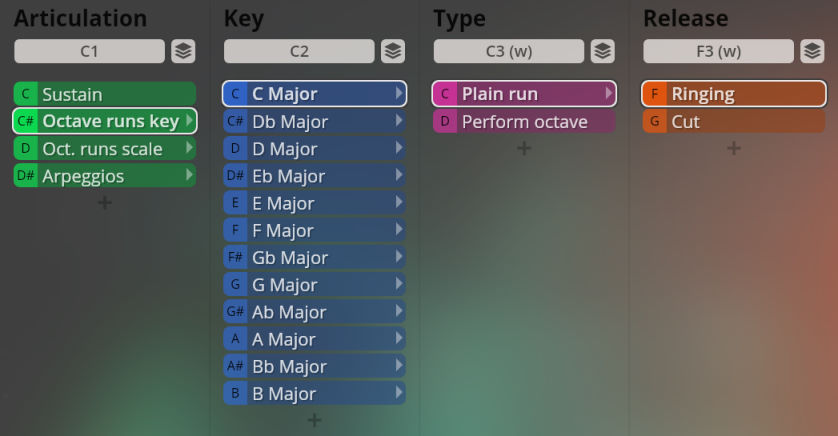
Perform octave
An actual octave run has to be completed in order to trigger its execution. The advantage compared with "plain" runs is that it allows you to time exactly when after a sustained starting note the run should begin.
Octave runs scale
Octave runs up and down, plain with ringing and cut release, and as performance octave: Ionian/Major, Dorian, Phrygian, Lydian, Mixolydian, Aeolian/Minor, Locrian, chromatic, and whole tone. "Cut" release is only executed when the octave run is not completed, allowing you to attach another sample instead of the octave.
- Range
- Plain run: upward runs around the 4th and 5th octaves, downward runs around the 6th and 7th octaves, e.g., Ionian/Major up B3-A#5, down B5-A#7
- Perform octave: roughly spanning the 4th to the 6th octave, e.g., Ionian/Major B3-A#7
- Mode selection: C2-G#2
- Plain run/perform octave: C3/D3
- Ringing/cut release: F3/G3
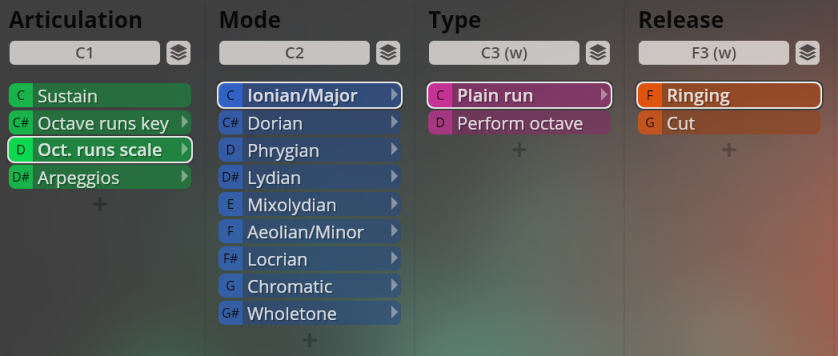
Perform octave
An actual octave run has to be completed in order to trigger its execution. The advantage compared with "plain" runs is that it allows you to time exactly when after a sustained starting note the run should begin.
Arpeggios
Up, down, and cross arpeggios at 80/100/120 BPM, major, minor, dominant 7, major and minor 7, minor with major 7th, diminished, and augmented. These are already prepared for timestretching, i.e., all Patches have the original tempo they were recorded with entered as their source tempo. This allows you to adapt your repetitions automatically to the tempo of your project with only two mouse clicks. "Cut" release is only executed when the octave run is not completed, allowing you to attach another sample instead of the octave.
- Range: C4-A#5
- Tempo selection: F1-G1
- Chord type: C2-G2
- Up/down/cross: C3/D3/E3
- Lowest/highest/cut release note: F3-G3

Cross
- Ringing/cut release: F3/G3

FX-Woodwinds Low
Regular and cluster tones, and crossfades between the two.
- Range: A#1-D4
- Articulation keyswitches: C5-D#5
Regular / Clusters
Short and long notes, dynamics, and flutter tonguing. The latter has no additional types.
Short
- Bold/agile: C6/C#6
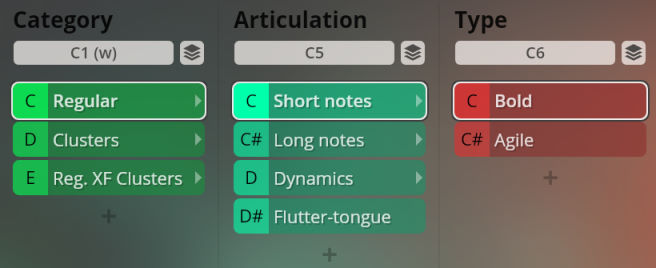
Long
Sustained notes, regular, espressivo, and with soft swell.
- Type keyswitches: C6-D6
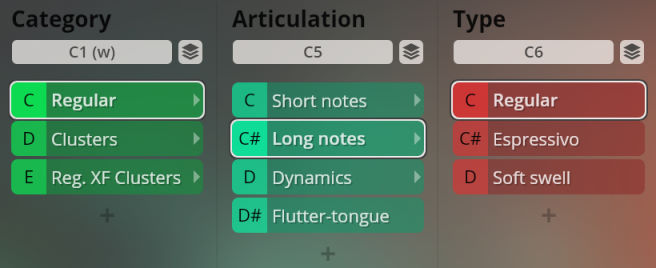
Dynamics
Sforzato, sforzatissimo, and short and long swells.
- Type keyswitches: C6-D#6
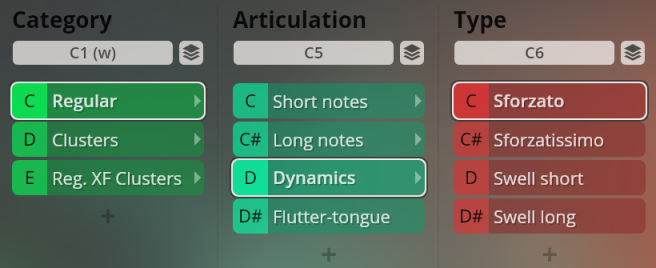
Reg. XF Clusters
Crossfading between regular and cluster variants. Use Dim.Ctrl/A (MIDI CC1, modwheel) for crossfading between regular and cluster Articulations.
Short notes, long notes, dynamics
These feature the same types as their namesakes in the other two categories.
- Type keyswitches: short notes C6-C#6, long notes C6-D6, dynamics C6-D#6
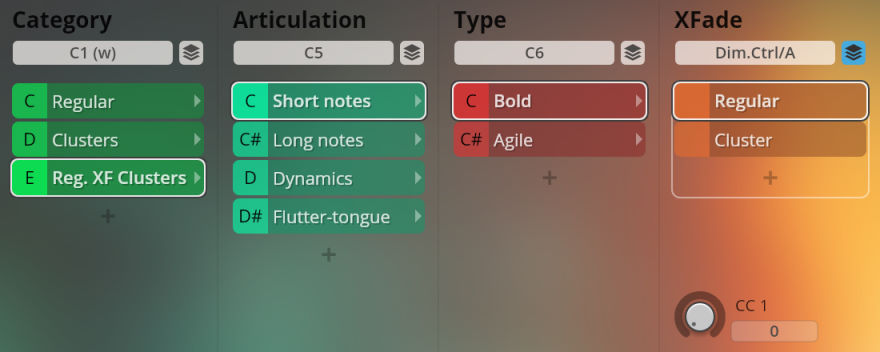
Flutter-tongue
